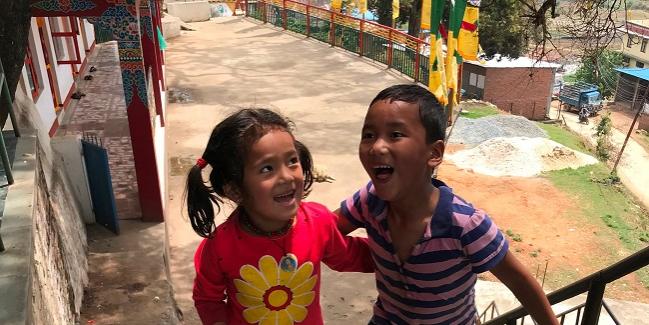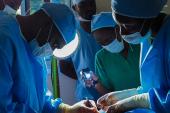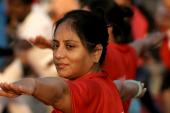Echo Screening for Rheumatic Heart Disease in Kids Gets a Boost
The randomized study of Nepali schoolchildren fills an evidence gap. Next up: obstacles to implementation must be addressed.

Broad screening efforts to identify rheumatic heart disease (RHD) using echocardiography among schoolchildren can enable prompt care, randomized trial data from Nepal suggest.
The clinical need is great, Prahlad Karki, MD (B.P. Koirala Institute of Health Sciences, Dharan, Nepal), and colleagues point out. Acquired during childhood, RHD leads to the most deaths from valvular heart disease worldwide. Moreover, its “burden is disproportionally prevalent in marginalized communities across sub-Saharan Africa, South Asia, and the Pacific Islands, where endemic patterns of disease prevail.”
Yet RHD’s harms can be prevented. “Subclinical valvular lesions of RHD that are detected early are reversible. School-based systematic echocardiographic screening represents a pragmatic approach to detect children with early-stage disease in low-resource settings, with initiation of secondary antibiotic prophylaxis before valvular pathologies become irreversible,” they write.
Senior author Thomas Pilgrim, MD (Bern University Hospital, Switzerland), acknowledged the primary endpoint—reduction in the prevalence of RHD—“did not meet the conventional levels of statistical significance.” Still, “the magnitude of the reductions consistently observed . . . were remarkable,” he noted to TCTMD via email.
Overall, he said, “the findings of our study lend support to the hypothesis that early detection of clinically silent rheumatic heart disease and timely initiation of secondary antibiotic prophylaxis are an effective approach to control rheumatic heart disease in endemic regions.”
Partho Sengupta, MD, MBBS (West Virginia University Heart and Vascular Institute, Morgantown), who did not take part in the study, told TCTMD that while the findings aren’t surprising, they do fill a gap by virtue of coming from a randomized trial. “This has been a hypothesis that has been in the minds of a lot of people,” he said, “but the evidence has not been there.”
He described the work as a “very well-executed, painstaking, long study, and it’s difficult to get data like this. I think it proves the point that [screening] does work.”
The results are also relevant to Western countries, said Sengupta. “We have a lot of immigrant populations that come with rheumatic heart disease. So it’s not something we don’t encounter.” An approach that can “reduce the burden of valvular heart disease that impacts young people so early on and takes away so much of their productive years is commendable, and I think it is important,” he stressed.
That said, there’s a lot that needs to happen before screening programs can be executed, said Sengupta. “This satisfies the evidence that was needed to show that you can intervene early and make a difference. The question now is: how are you going to implement it?”
Less Than $5 per Child
As outlined in their JAMA Cardiology paper, Karki et al conducted a cluster-randomized clinical trial that took place in Nepal’s Sunsari district, which contains both urban and rural areas. A total of 35 public and private schools serving students ages 5 to 12 years were randomly assigned to either no baseline screening (n = 16) or to systematic echo screening followed by antibiotic prophylaxis in children found to have latent RHD (n = 19) between December 2012 and August 2014.
Then, after a median of 4.3 years, children ages 9 to 16 at 32 of the schools underwent echo follow-up (three schools weren’t available for analysis). Diagnosed according to World Heart Federation criteria, two of 2,648 children in experimental schools had definite RHD and 11 had borderline RHD. At control schools, the numbers were two and 15, respectively, out of 1,325.
Per 1,000 children, the prevalence of definite or borderline rheumatic heart disease was 10.8 at control schools, compared with just 3.8 per 1,000 at the schools that screened (OR 0.34; 95% CI 0.11-1.07)—not quite reaching significance. However, focusing solely on the experimental group, where baseline prevalence had been 12.9 per 1,000 children ages 9 or older, RHD risk had dropped significantly by follow-up (OR 0.29; 95% CI 0.13-0.65).
The researchers also attempted to calculate how much a broader intervention would cost if applied to the whole district. A 10-year strategy, wherein approximately 300,000 were screened at least once and 80,000 got a second exam after 6 years, could detect 2,900 children with borderline/definite RHD, they estimate. The projected cost for the program would be $1.4 million in all, amounting to a mean of $4.67 per child and $483 per RHD case.
Barriers to Overcome
There are big obstacles to implementation. “Awareness and research funding for RHD disproportionally trails the engagement and expenditure for other diseases, such as tuberculosis and malaria, and is dwarfed by the resources spent on degenerative valvular heart disease,” the investigators note.
Editorialists Kumar Narayanan, MD, DM (Medicover Hospitals, Hyderabad, India, and University of Paris, France), along with Xavier Jouven, MD, PhD, and Eloi Marijon, MD, PhD (European Georges Pompidou Hospital and University of Paris), point out that screening by echocardiography was proposed more than a decade ago and can detect 20 times more RHD than clinical examination alone. Despite this, they write, it has “yet to progress beyond the realm of research.”
The current study is noteworthy for its “painstaking” design as well as for the obstacles it uncovers, Narayanan and colleagues say, among them the need for simplified diagnostic criteria, questions over how to handle borderline RHD, and the need to reliably deliver penicillin when needed.
Also key is the recognition that RHD can’t be addressed alone, they stress. “RHD is a disease of poverty. Ultimately, for any RHD control program to succeed, screening and intervention have to be part of a broader strategy of improvement in living conditions, hygiene, rural development, and universal health promotion for children and adolescents.”
We cannot look at this healthcare challenge in isolation but must consider the entire context of economic, social, and political inequalities that provide the soil for RHD to thrive. Thomas Pilgrim
For Sengupta, the biggest challenge isn’t a lack of equipment—he cited the potential for handheld, pocket ultrasound devices—but rather the expertise required to interpret the results. It’s possible to train people in this skill, though this doesn’t always last over the long term, he noted. “The cognitive burden is the bottleneck . . . in the field.”
Back in 2011 and 2013, Sengupta led two American Society of Echocardiography screening efforts in India that leveraged the expertise of physicians and sonographers who worked on-site, as well as dozens of specialists across the world who remotely interpreted the tests. Part of these programs involved training local healthcare professionals in how to do the exams.
“We showed that it could be done—that was the first time we used pocket ultrasound like this for community screening of heart diseases,” he said. “But the bigger problem has been that after we train them, if you don’t have a sustainable process there, [the competency] dies out.” While there are Indian physicians with this expertise, it falls short of what’s needed for the country’s 1.3 billion people, said Sengupta, as it does in other areas where RHD is prevalent.
Artificial intelligence that leads to a more-automated process could be helpful, Sengupta suggested, adding that other tools apart from echo, such as ECG, might be able to “extract the same information.”
Pilgrim agreed that there’s much to be learned.
“There are still many questions, for example with regards to the appropriate age of screening or the optimal interval for repeat screening, that need to be resolved in order to effectively scale up a screening program,” he said. “In addition, infrastructure, organization, and expertise are required in addition to health education and community involvement in order to improve long-term follow-up and adherence to secondary prevention.”
Screening and prevention “should be only one pillar of a more-comprehensive, coordinated effort including health education, community involvement, and primary prevention to make a sustainable impact towards the control of RHD in endemic regions,” Pilgrim advised.
Like the editorialists, Pilgrim also emphasized that “RHD continues to be a disease of poverty.”
“Therefore, we cannot look at this healthcare challenge in isolation but must consider the entire context of economic, social, and political inequalities that provide the soil for RHD to thrive,” he said. In their study, for instance, many children dropped out of school and were unable to participate in follow-up screening. This problem grew worse, Pilgrim added, “in the aftermath of the devastating earthquakes in April and May 2015 and the political instability over a new constitution in autumn 2015, during which schools in the Sunsari district were temporarily closed.”
Caitlin E. Cox is News Editor of TCTMD and Associate Director, Editorial Content at the Cardiovascular Research Foundation. She produces the…
Read Full BioSources
Karki P, Uranw S, Bastola S, et al. Effectiveness of systematic echocardiographic screening for rheumatic heart disease in Nepalese schoolchildren: a cluster randomized clinical trial. JAMA Cardiol. 2021;Epub ahead of print.
Narayanan K, Jouven X, Marijon E. Screening for rheumatic heart disease—quo vadis? JAMA Cardiol. 2021;Epub ahead of print.
Disclosures
- Karki, Narayanan, Jouven, and Marijon report no relevant conflicts of interest.
- Sengupta reports serving as a consultant to Kencor Health and Ultromics.





Comments